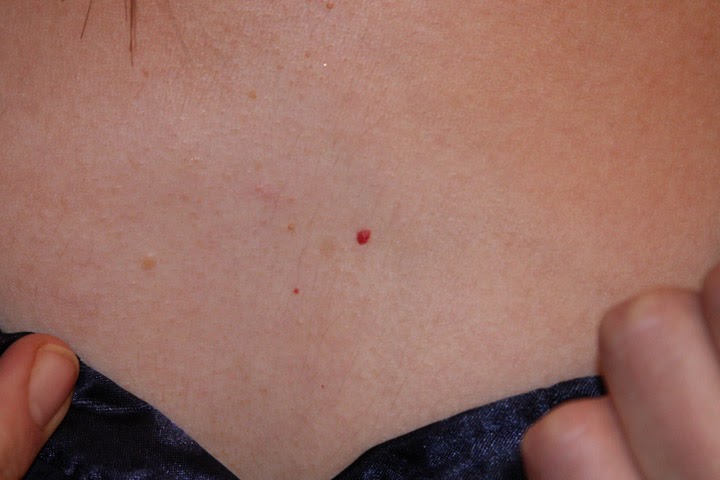


In other cases, some have no skin conditions, Dr. “The most common skin condition is bleeding into the skin.” “We see a few major categories of skin findings in patients with leukemia,” says Amy Forrestel, MD, director of dermatology at the University of Pennsylvania. In addition to symptoms like nausea, fever, fatigue, weight loss, and infections, leukemia can also produce a variety of skin conditions such as bruising, rashes, and bleeding. When someone has this disease, the cells normally produced in the bone marrow, such as white blood cells, which fight infection red blood cells, which carry oxygen throughout the body and platelets, which help form blood clots, will be crowded out by abnormal leukemia cells. A spider angioma is a common, mild (benign) skin condition that appears as a small red spot or bump on the surface of the skin.

Your doctor may also recommend an antihistamine to combat itching.Leukemia is a type of cancer that affects the blood cells and bone marrow, a tissue inside bones where blood cells are made. If the rash is more severe, you may receive oral corticosteroids, and your chemotherapy regimen may be adjusted. For mild to moderate skin rashes, your doctor may prescribe a corticosteroid cream along with an oral antibiotic or antibiotic cream. Many health conditions may lead to this condition. Health Conditions Petechiae is caused due to internal bleeding and may be a sign of underlying conditions. Is Tiny pinpoint red dots on skin your major concern Solve your problem quick & easy with online consultation. Both of these are explained in brief below. They may be caused by activities (powerful coughing, vomiting, lifting heavy weights, etc.), illnesses (viral infections, sepsis, blood disorders, etc.), and medicines (reaction to medications like NSAIDs, sedatives, blood thinners, etc.). Treatment for chemo rash can vary based on the type and severity of the reaction. The red pinprick spots on the skin may be caused due to a health condition or as a result of the side effects of certain drugs. Petechiae are small, red dots that usually appear around the eyes. “Therefore, it’s important to contact your doctor with any reports of rash.” He added you should seek immediate medical care or call 911 if your rash is accompanied by any of the following symptoms: hand, foot, facial or tongue swelling fever, chills, nausea, vomiting or diarrhea. Your rash develops into blisters, becomes bright red, develops pus or crusts overĬhris Walters, a certified physician assistant in the Infusion Clinic, says chemo rashes can also resemble disease processes that require immediate attention.You have itching that lasts more than 48 hours.Your rash worsens after prescribed creams or ointments.Additionally, you should notify your care team if: To promote healing, apply heat to the boil in the form of hot soaks or compresses. If you think you’re experiencing a skin rash related to your cancer treatment, you should inform your care team when the rash first appears. “To reduce the irritation, you may be given medication prior to starting certain treatments.” Allergic skin reaction on a man's chest after chemotherapy.Ĭhemo rash may appear on the face, scalp, neck, back and chest, but can also show up on the limbs, abdomen and buttocks. It’s important to note that some treatments are expected to cause a rash, said Krissy Frantz, manager of Moffitt’s Infusion Clinic. They can also be uncomfortable and noticeable, depending on the location. They occur as a result of minor bleeding from tiny blood vessels. Chemo rash can appear in several different forms.Īlthough skin reactions to cancer treatment are usually not severe, they could indicate an allergic reaction to a medication. Petechiae are non-blanching, red or purple skin spots that measure less than 2 mm in diameter. It may be the result of chemotherapy, radiation, immunotherapy, targeted therapy or stem cell transplants. Skin rashes may show up any time throughout cancer treatment but are most common in the first two or three weeks following the start a new treatment. Chemo rash is a general term used to describe the various forms of skin rashes resulting from cancer treatment. Certain medication can be the culprit behind red rashes or spots on your skin. Drug rashes look like raised red bumps, a flat red rash, or scaly skin. Cancer treatment can evoke a variety of responses in different individuals, but chemo rash is one commonly occurring side effect. Avoid certain foods like eggs, milk, peanuts, medications and insect stings as they are the most common triggers of anaphylaxis.


 0 kommentar(er)
0 kommentar(er)
